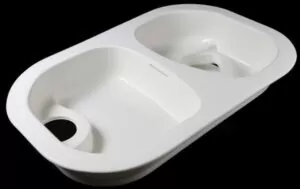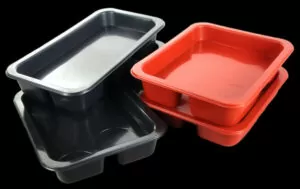In the manufacturing world, vacuum forming processes play a key role in delivering cost-effective solutions with unparalleled design flexibility. And advanced surface treatment technology is gaining insights into the field of vacuum forming, where cost-effective solutions and unparalleled design freedom, among other advantages, provide new impetus and direction for the development of thermoforming processes.
Its fast process also accurately creates complex yet lightweight products; the surface treatment gives products an extra touch, turning simple plastic into something special. In this blog, we’ll explore advanced technologies like these to add beautiful and durable functionality to your items – supporting creatives and businesses!
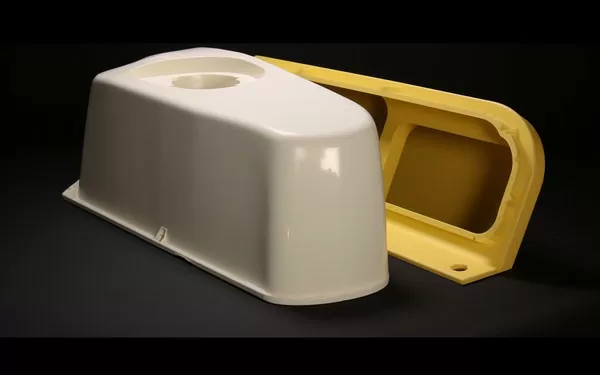
Understanding Vacuum Forming
Before delving into the details of surface finishing, it’s important to understand the concepts and mechanisms behind vacuum forming process. Thermoforming (also known as vacuum forming) is a method used to shape a variety of plastic materials.
In this process, heated sheet to forming temperature until it becomes pliable enough; vacuum pump is then used to remove the air between the plastic sheet and its mold, creating a vacuum effect that pulls the material into the desired shape. When manufacturing large but relatively lightweight parts, many manufacturers prefer thermoforming to alternative molding technologies because thermoforming tends to have a lower unit price.
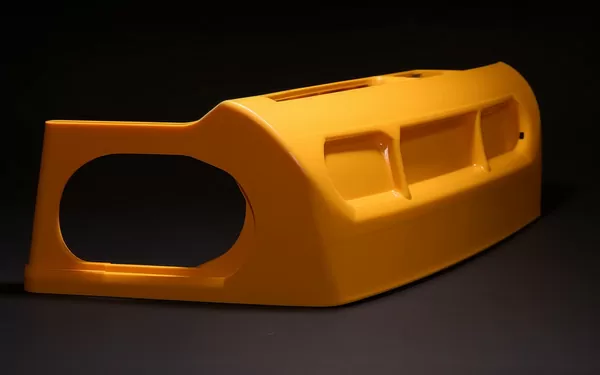
Surface Finishing for Vacuum Formed Products
The essence of the surface finishing process is to change the appearance, texture, cleanliness or feel of the original plastic product surface, as well as its resistance to chemicals and electrical current. Nowadays vacuum forming is no longer just about producing regular old plastic parts, think again: with the right surface treatment, items can look like their surface treatment painting , have a matte texture that highlights quality, or even be transformed into A perfectly reflective mirror.
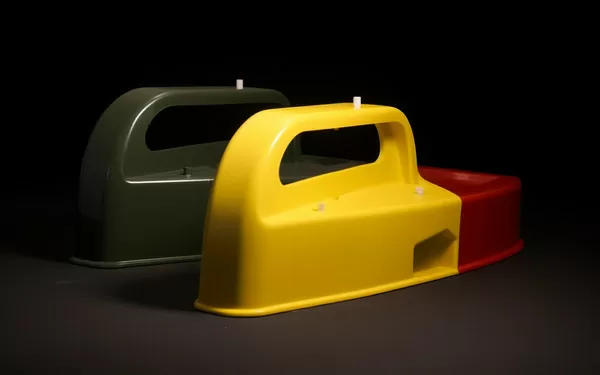
Don’t underestimate the importance of this transition, either. When a customer first encounters your product, its appearance speaks volumes; does it feel cheap and crude? Or was time and effort spent making sure everything was just right? However, achieving the perfect finish can present some challenges. Of course, the type of material used plays a role, but so does how intricate the details need to be and what the finished product will ultimately do!
The Importance of Surface Finishing in Vacuum Forming
Vacuum forming is an efficient and affordable manufacturing technology used to create complex shapes and designs. However, due to how it works, sometimes items made with this method will have surface imperfections. This is where finishing techniques come in: they help ensure each piece looks its best and performs well over time!

Functional and Aesthetic Considerations
When people use a product, they expect it to feel and look a certain way—surface imperfections can compromise the intended design and user experience. From consumer products to industrial components, the texture, color and sheen of an object’s surface often have a profound impact on how the object is perceived or used.
Meeting Industry Standards
Every industry has strict requirements for the appearance and performance of its products – whether it’s a high-gloss surface required by an automotive company or a sterile, easy-to-clean surface required by the medical sector: surface finishes must meet these benchmarks every time.
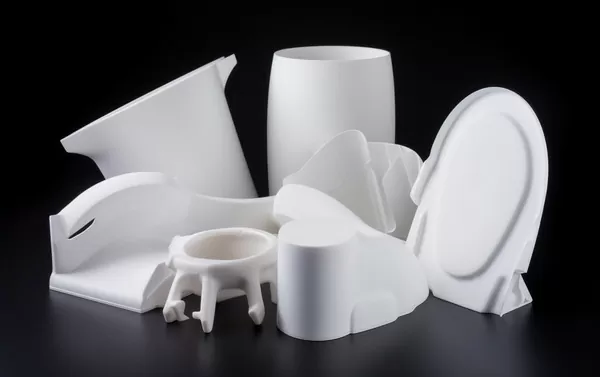
Advanced Surface Finishing Techniques
Improving the appearance of vacuum formed plastic products is more than simple technology – it requires skill, expertise. Want to take your surface finish game to the next level? Check out these tips:
Material Selection and Mold Preparation
The first consideration in achieving a top-notch surface finish is always choosing the right material. While high-impact polystyrene (HIPS) and acrylonitrile butadiene styrene (ABS) are popular choices because they are user-friendly and affordable, it may be worth considering polymethylmethacrylate (PMMA) if your budget allows ), options like polyethylene terephthalate glycol (PETG) and even polycarbonate, all have a solid reputation when aesthetics are paramount.
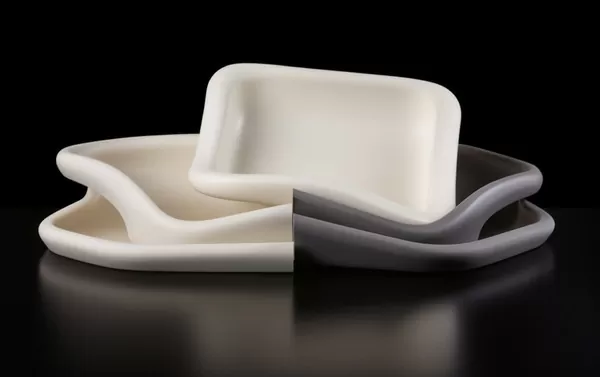
Another important step? Get your mold ready! They require perfect cleaning and regular maintenance so that it does not interfere with their ability to produce a super smooth surface; sometimes people also use specially designed textured/polished parts that give them the part they want without any extra work.
Chemical Vapor Polishing
The Process
Chemical vapor polishing (CVP) is a chemical reaction process that uses an evaporating gas solvent to treat vacuum formed parts. This process causes the surface to partially dissolve and soften. When it solidifies again, all imperfections disappear: instead, you get an incredibly shiny object that looks like it’s made of glass!
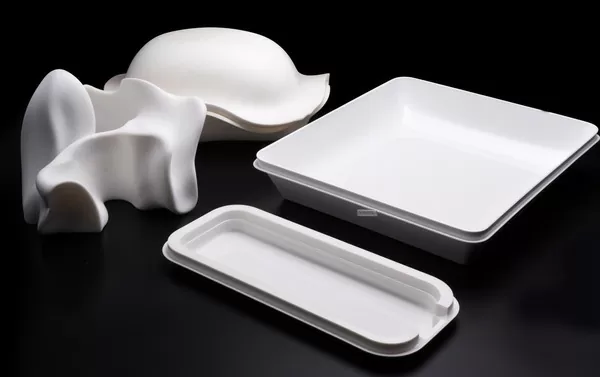
Achievable Finishes and Applications
CVP can achieve optical-grade finishes, ideal for lighting components, lenses, and displays where clarity and uniformity are crucial.
Mechanical Buffing and Sanding
The Process
Using abrasives, we can manually polish and sand the surface of vacuum formed products to create a polished surface. This technology eliminates any imperfections or inconsistencies and offers flexibility in surface textures – for example a satin smooth or a shimmering reflective finish are all possible.
Tips for Success
In order to achieve effective mechanical polishing, it is important to be patient and consistent when using increasingly finer abrasives. If rough material removal was performed initially, uneven pits or bumps may still remain.
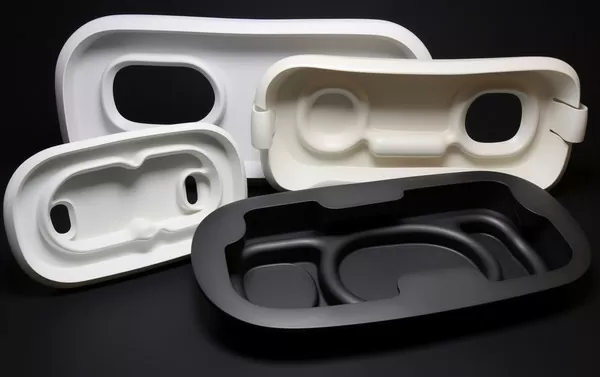
Paint and Coatings
Types of Finishes
When people talk about finishes, they are usually referring to paints and coatings. For vacuum formed products, this may involve a primer, a color coat, and a clear coat for protection and appearance!
Application Techniques
When it comes to paint adhesion, proper surface preparation and adequate curing time are critical for the paint or coating to adhere properly. Sometimes you may even want to change the surface energy of the plastic so that it bonds better – objective flame treatment techniques can help.

Plasma Treatment
Introduction to Plasma
Plasma treatment is a technique that changes the surface properties of a material by subjecting it to an ionized gas.
Benefits for Vacuum Forming
For vacuum formed products, this type of treatment can enhance wetting and surface energy, making them more cohesive when printed or bonded – giving you a better overall result!

Hot Stamping and Foil Transfer
The Art of Hot Stamping
The Process Behind Hot Stamping Hot stamping is a technique that uses heat and vacuum pressure to apply metal or colored foil to a surface. This method creates elegant, long-lasting decoration.
Customization Options
Endless possibilities for personalization With hot stamping, you can add more than just plain old gloss: You can choose from holographic effects, textured patterns (like animal prints), or even three-dimensional images. It’s perfect for brand packaging as well as consumer products like mobile phones!
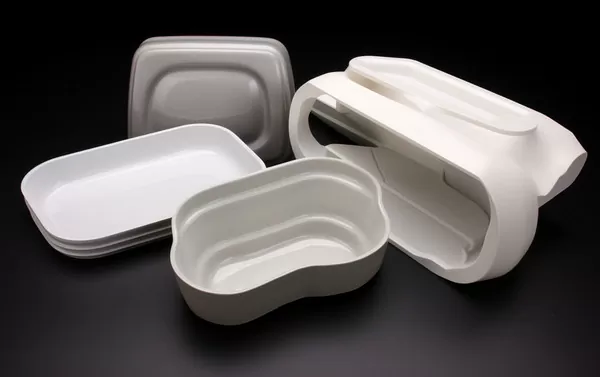
Texturing During the Forming Process
Pre-Form Texturing
Pre-Form Texturing allows textures to be added into a forming mold itself, enabling manufacturers to create complex designs and patterns on the final product.
Impact on Aesthetics
This technique is essential for differentiating products on aesthetic grounds: it produces distinctive tactile surfaces which catch the eye while also serving a practical function – such as improving grip.
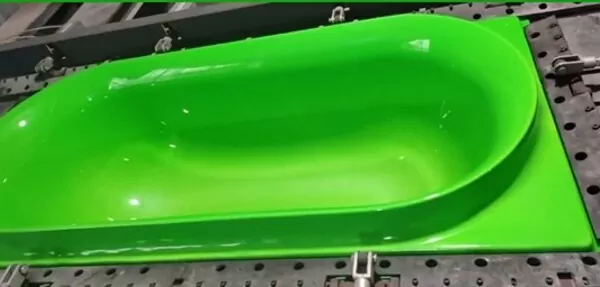
Painting and Coating
Painting and coating are time-honored techniques used to enhance the appearance of vacuum formed products, but their final results are highly dependent on their process.
Advanced spray painting systems or robotic arms guarantee an even coat every time; special coatings (such as those that provide UV protection or make graffiti easy to wipe away) may also be used.
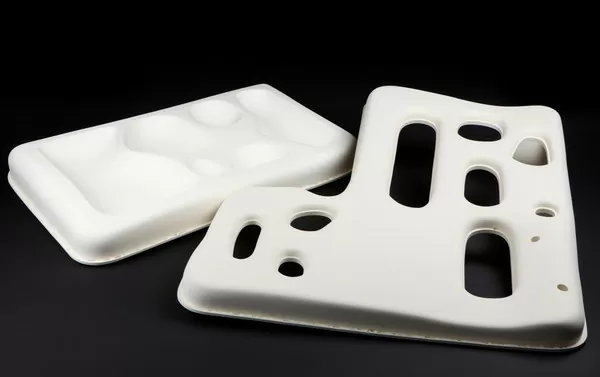
Vacuum Metallization
Vacuum metallization or vacuum deposition is a technique whereby metal can be coated on an object. It has many uses: creating a mirror-like surface (which also protects), applying a metallic finish to non-metallic items – making them look like they are made of metal. Today, this process often coats plastic with aluminum(aluminum reflector plate).
In-Mold Texturing
In-mold texturing (IMT) is a technique used by many to create custom textures on the surface of vacuum formed parts. When you make something with vacuum forming, you use a mold or tool that has a texture so that the texture is replicated on the thing you’re making.
The result: a finished product with a consistent texture. And it won’t wear out as easily as other types, and if you have a lot of little details in your design, don’t worry, man, because IMT can handle those details just fine, too.
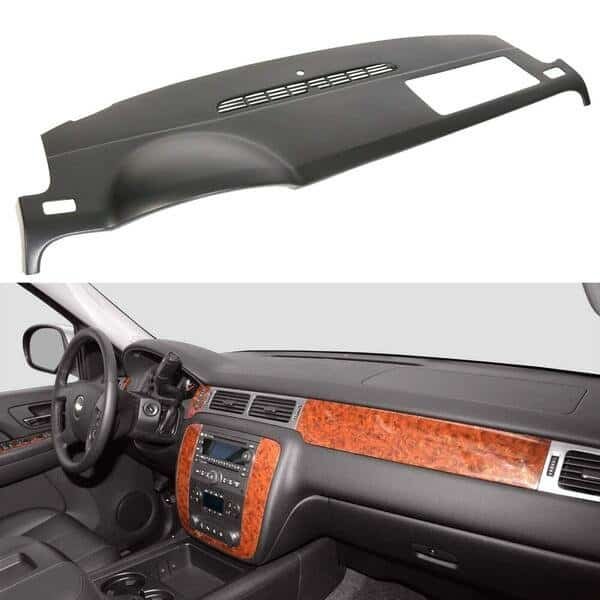
Inline Web Handling
In-line web handling refers to operating the paper or web as it moves for finishing. This method allows multiple finishes to be applied in one go, making the operation more efficient and reducing the likelihood of defects. Its functions include slitting, coating, lamination and other processes – all of which simultaneously improve the surface properties of the product.
Heat Bending and Forming
In some cases, heat bending or forming may be required in addition to vacuum forming. This is especially true for parts that require curves or a seamless aesthetic that direct vacuum forming alone cannot achieve.
By heating the edges of the formed part, it becomes malleable enough to bend along pre-designed lines – creating an uninterrupted monolithic surface once everything cools again.
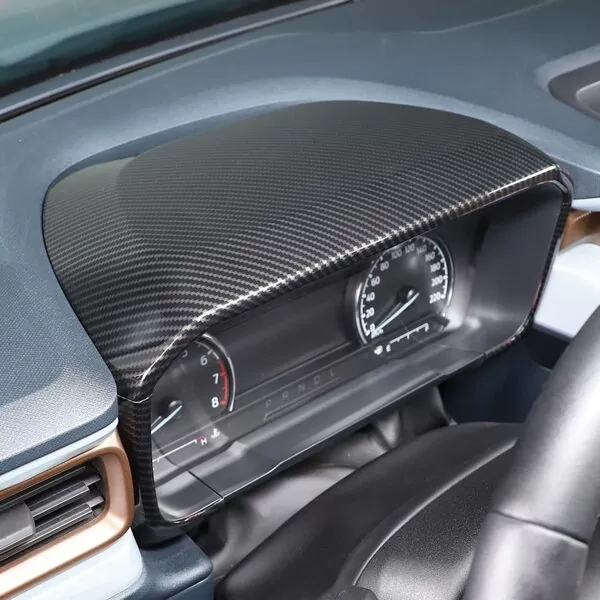
Implementing Finishing Techniques in Manufacturing
Understanding advanced finishing techniques is one thing, but being able to use them effectively in the manufacturing process is another entirely. How can air pressure forming companies ensure these methods are seamlessly integrated into their processes? Here we offer some recommendations for such efforts.
Design for Finish (DFF)
Design for finishing is a method of considering the finishing process in the early stages of product development. By designing with specific surface finish goals in mind, manufacturers can ensure they design for optimal part geometry, texture, draft angles and other factors that impact the final appearance.

Quality Control and Assurance
Maintaining strict standards during the finishing process is crucial. Using online sensors and automated inspection systems can identify any defects as soon as they occur, meaning adjustments can be made immediately.
Regular quality audits and inspections of the process itself can also catch problems before they seriously compromise product quality.
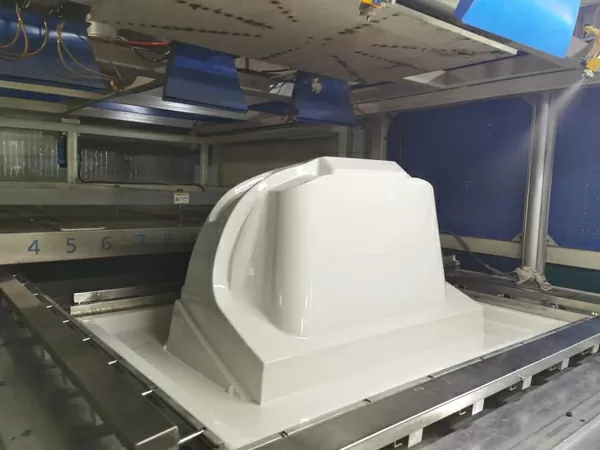
Training and Skilled Labor
Advanced finishing techniques often require specialized equipment and skilled operators. Training programs should be in place to ensure that personnel are proficient in using the vacuum forming machines and understanding the nuances of the finishing process.
The Future of Surface Finishing in Vacuum Forming
As technology advances, so do the finishing methods for vacuum formed products. Industry trends indicate that finishing technology will be more automated in the future than ever before.
Thanks to further integration between the different production stages, a currently unparalleled level of quality and customization can also be achieved.

Advanced Materials and Coatings
As new materials and coating technologies continue to advance, manufacturers find themselves with previously unimaginable options for achieving highly specialized finishes on their products. Some examples of such advancements include coatings that repair themselves when damaged, surfaces that change color before your eyes, and even finishes that are completely eco-friendly!
Digital Finishing
Digital technology is now beginning to take part in the finishing process of vacuum formed products. This means that by using technologies such as digital printing and texture mapping, manufacturers can apply very high-definition graphics and create complex textures directly on product surfaces. The ability to do this opens up the possibility of customization.

Case Studies
To illustrate the real-world impact of advanced surface finishing techniques, here are a few case studies of companies that have utilized these methods to great effect.
Automotive Interiors
The automotive industry requires components that are both beautiful and wear-resistant. Using paints, coatings and textures on vacuum-formed interior parts like center consoles and dashboards not only makes the interior of your car look great, it also helps them maintain their appearance while on the road.

Medical Equipment
If parts made using vacuum forming are used in medical devices, they are often required to have smooth surfaces that are easy to clean and do not react with chemicals.
By vapor polishing components or adding specific coatings, manufacturers meet these strict standards and ensure parts look professional and modern.

Consumer Electronics
For items like laptop cases or speaker cases, IMDs along with surface coatings can make a huge difference in how they look and feel – which is important when you’re selling directly to consumers. These surface treatments do more than just protect your products: they give them a smooth surface that customers will love to touch!
Conclusion
Advanced surface finishing plays an important role in vacuum forming. Manufacturers need to understand different technologies and how to use them so that their products comply with industry standards and also attract people’s attention when a large number of similar products are sold.

There are many exciting developments in surface treatments for vacuum formed products; over time, those who are able to think creatively may well find themselves with a powerful advantage over their competitors!
Whether it’s a high-gloss coating or a custom texture, each of the finishing techniques discussed has its own pros and cons. Manufacturers need to carefully assess their individual needs as well as the needs of the end user if they want to choose the perfect combination of finishes – something that can make a product truly outstanding!
Because when done with skill (coupled with creativity/advanced expertise), these methods truly have almost limitless possibilities for transforming vacuum formed plastics.
When it comes to manufacturing top-notch vacuum formed products, attention to detail really pays off in the final stages. If you want your product, whether it’s a smooth exterior or a custom textured grip, to be significantly higher than your competitors’ products made using similar methods, it’s important not to overlook surface finish.

In this article, we explore some advanced techniques that can help take aesthetic and tactile quality to another level; namely painterly effects such as chrome finishes; vacuum metallization (metal coating); and techniques such as in-line coil processing How to help manufacturers meet industry needs better than ever!
By using advanced surface treatment technologies, manufacturers can make their vacuum formed items more than just functional items and develop products with unlimited added value. By perfecting and implementing surface treatment processes and technologies, product manufacturers can create distinctive plastic products at a lower cost.



